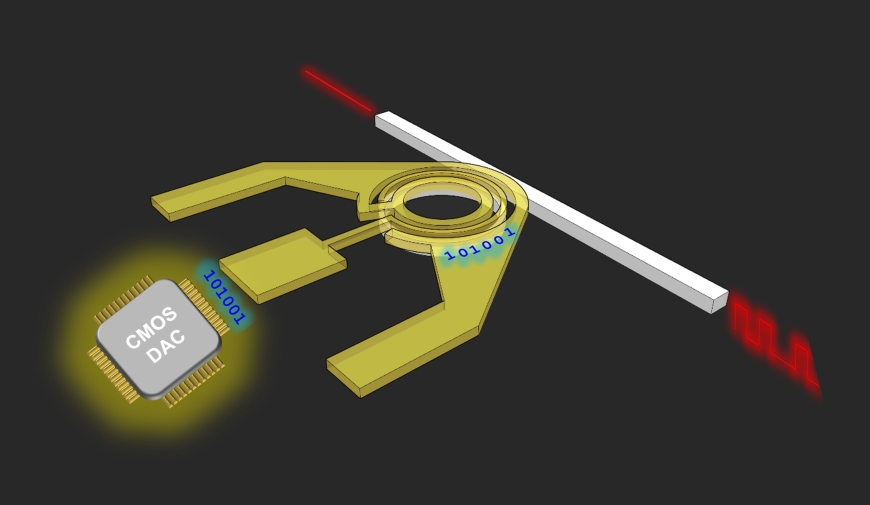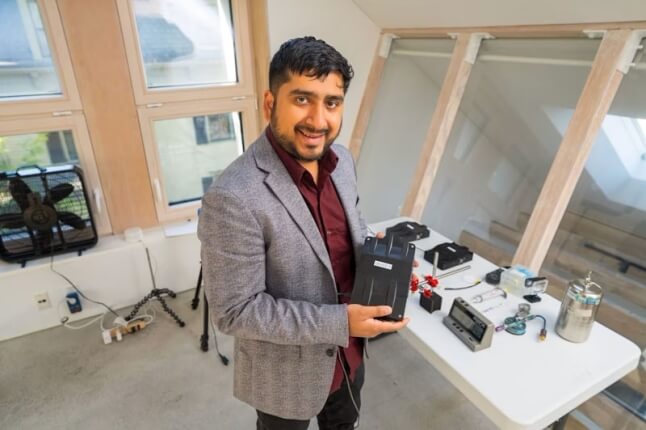News
Electro-optic modulators encode electrical signals onto an optical carrier. They are essential for the operation of global communication systems and data centers used in a range of applications and industry settings such as artificial intelligence (AI), broadband networks, and high-performance computing.
Now, a three-year collaboration between the Harvard John A. Paulson School of Engineering and Applied Sciences (SEAS) and the University of Sydney has led to the development of a new-generation electro-optic modulator that is a smaller, stronger, cooler, faster and more cost-effective on-chip system than its bulky predecessors. The modulator, which harnesses the compound silicon carbide, could advance quantum communications and microwave photonics by facilitating photonic integration and the co-integration with traditional electronics and quantum emitters.
The research was published in Nature Communications.
“The use of silicon carbide will potentially open up new opportunities in photonics for various applications, including quantum computing,” said Xiaoke Yi, professor at the University of Sydney’s School of Electrical and Information Engineering and co-senior author of the paper.
“The silicon carbide modulator will likely find applications in quantum communications,” said Marko Loncar, the Tiantsai Lin Professor of Electrical Engineering at SEAS and co-senior author of the study. “For example, it could be used to control temporal and spectral properties of quantum emitters that exist in this material, as well as to route the photons in reconfigurable fashion.”
Silicon carbide was first recognized as a photonics wonder material more than three decades ago when it was found to display the ‘Pockels effect’ – a light polarizing technique used in electrical engineering. Despite silicon carbide's exceptional durability in demanding electrical, mechanical and radiation environments, its use in photonics has been limited.
“Modulators that use the Pockels effect enable low loss, ultrafast and wide-bandwidth data transmission. Overcoming the previous unworkability of silicon carbide may allow for unique photonic-integrated circuits to transmit and process wideband and fast-speed signals – as well as for emerging quantum technologies,” Yi said. “We also hope that it will help integrate photonics with electronics – potentially paving the way for a new generation of integrated devices used for signal processing, microwave photonics, chip-to-chip, or intra-chip interconnects.”
The SEAS and University of Sydney modulator was shown to have no signal degradation, and demonstrated stable operations at high optical intensities, allowing for high optical signal-to-noise ratios for modern communications in data centers, 6G networks, satellites, and a future quantum internet.
The research was co-authored by Keith Powell, Liwei Li, Amirhassan Shams-Ansari, Jianfu Wang, Debin Meng, Neil Sinclair and Jiangdong Deng.
Device fabrication and characterization were performed at Harvard University’s Center for Nanoscale Systems (CNS), a member of the National Technology Coordinated Infrastructure Network, and the University of Sydney. This work was supported by Sydney Research Accelerator Fellowship.
Topics: Applied Physics, Optics / Photonics
Cutting-edge science delivered direct to your inbox.
Join the Harvard SEAS mailing list.
Scientist Profiles
Marko Lončar
Tiantsai Lin Professor of Electrical Engineering
Press Contact
Leah Burrows | 617-496-1351 | lburrows@seas.harvard.edu




